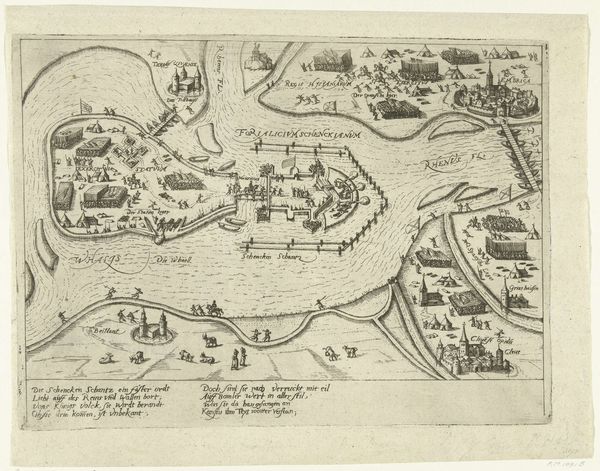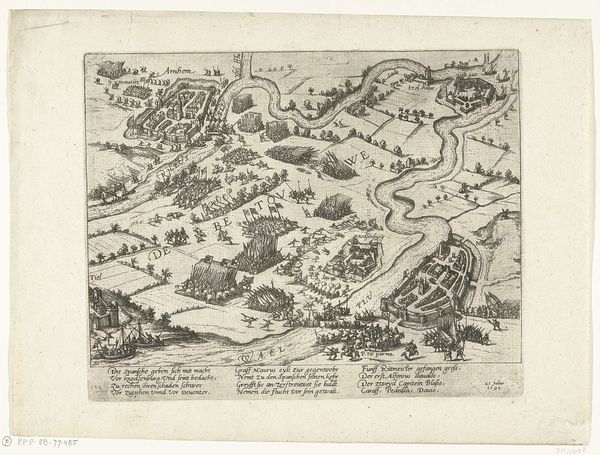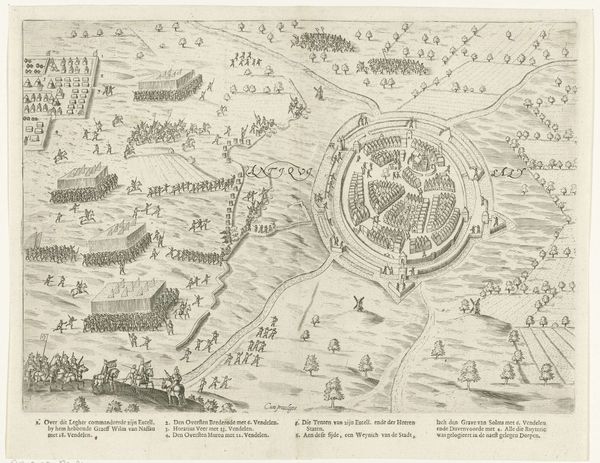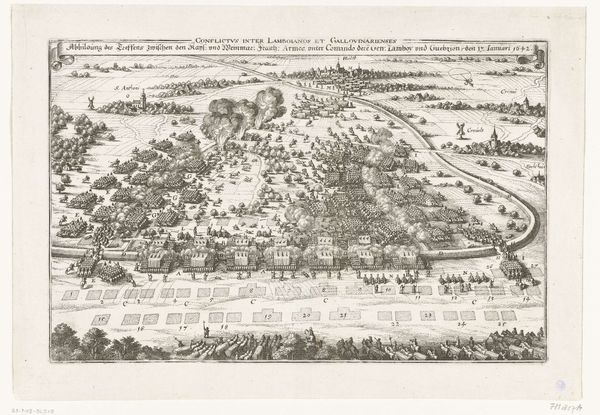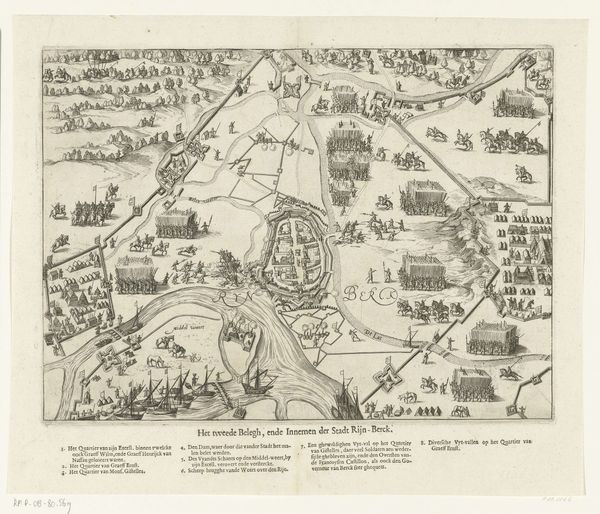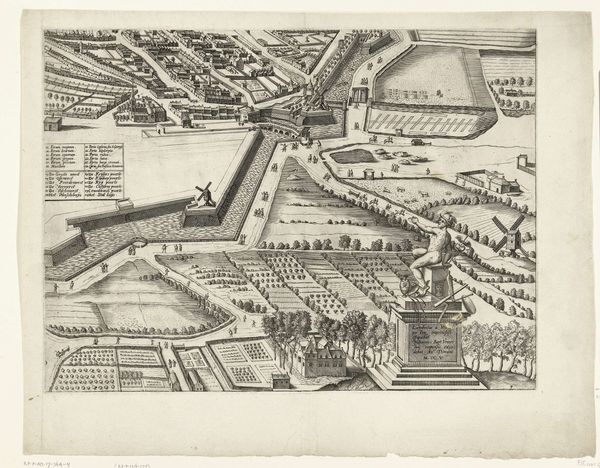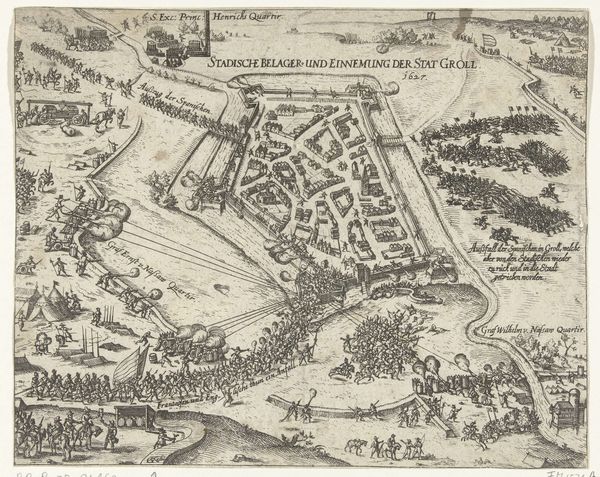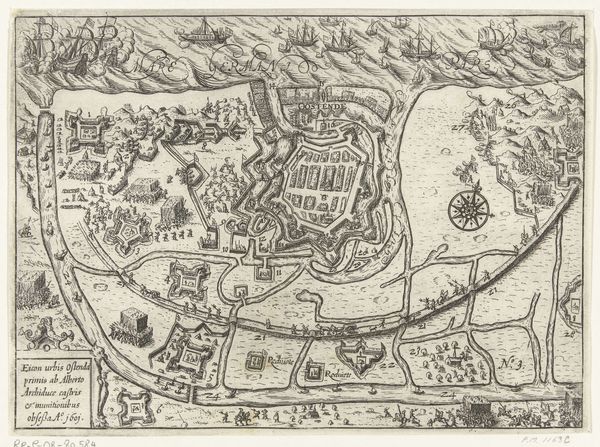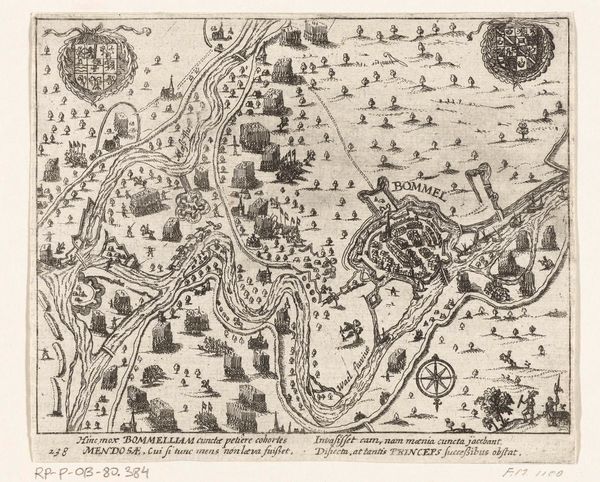
drawing, print, etching, engraving
#
pen and ink
#
drawing
#
medieval
#
pen drawing
#
mechanical pen drawing
# print
#
pen illustration
#
pen sketch
#
etching
#
old engraving style
#
landscape
#
personal sketchbook
#
sketchwork
#
pen-ink sketch
#
line
#
pen work
#
history-painting
#
engraving
#
realism
Dimensions: height 372 mm, width 305 mm
Copyright: Rijks Museum: Open Domain
Curator: Let's take a look at Pieter Bast's print, made in 1602, depicting Albrecht's failed attempt to relieve Grave. The Rijksmuseum holds this particular print, which is realized using etching and engraving techniques. Editor: Immediately, I'm struck by the dizzying detail. It’s almost overwhelming! You’re pulled in to decipher this miniature world teeming with armies, fortresses, and that frantic, chaotic energy of conflict. Curator: Yes, the labor involved in producing something so detailed is staggering. Look at the organized ranks of soldiers, the individual blades of grass etched into the landscape—this wasn't just about artistic expression, but also a demonstration of technical skill, reflecting the value placed on craftsmanship at the time. The availability of materials like copper plates would certainly have played a role in who could produce such work. Editor: It's hard to reconcile the seeming precision of a map with the absolute messiness of war. It feels strange seeing that detached aerial view used to chronicle the kind of brutal and unpredictable confrontation taking place in the Netherlands at the time. Do you see it almost acting as propaganda? Curator: Possibly so. Consider that prints like these, despite their apparent accuracy, are constructed narratives. Bast, whether intentionally or not, would be catering to a market keen on understanding and visualizing these contemporary conflicts. The consumption of such images offered a means of engaging with and processing events from afar. The perspective, while seeming objective, carries its own set of implications regarding power and understanding. Editor: Absolutely. Looking closer, it is really incredible to consider the print's circulation, becoming almost like an early form of news, delivered as art, into homes and studies all across Europe, sparking conversations about a specific moment in history. This work has got under my skin a little bit… Curator: Indeed. Considering Bast’s print in its material and historical context truly brings alive that moment.
Comments
No comments
Be the first to comment and join the conversation on the ultimate creative platform.

